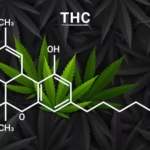Critical system protection refers to the strategies and measures used to keep essential technology and infrastructure running safely and reliably. In simple terms, it’s all about protecting the digital heart of modern life — the systems that support power grids, healthcare services, transportation networks, manufacturing facilities, financial systems, and even national defense operations. When those core systems are disrupted, the result isn’t just an inconvenience — it can affect entire communities and economies.
In today’s connected world, everything from hospital records to air traffic control relies on secure and stable systems. That’s why critical system protection has moved from being a specialized technical focus to a universal business concern. It’s no longer only about cybersecurity teams and IT departments; it also involves leaders, operators, engineers, and even everyday users who interact with essential systems. By understanding and applying clear protective principles, organizations can ensure that their most important operations remain available, trustworthy, and safe — even in the face of growing digital threats.
The Core Concept Behind Critical System Protection
At its core, critical system protection focuses on defending systems whose disruption would have serious consequences. When a system is labeled “critical,” it usually means that it supports key operations or public functions — for instance, an energy plant’s control network or a hospital’s patient database. These systems must run continuously, often with little or no downtime, because interruptions can endanger people, damage property, or halt vital processes.
This is what makes critical system protection different from general cybersecurity. While cybersecurity broadly aims to protect data and networks from attacks, critical system protection focuses on uninterrupted functionality, safety, and reliability. It must account for both digital and physical aspects — ensuring that systems remain resilient against both cyberattacks and operational failures.
The overarching goals are reliability, continuity, and safety. Reliability ensures systems perform as intended. Continuity makes sure operations can continue even during disruptions. Safety protects both human lives and the environment. Achieving all three requires a combination of technology, procedures, and a mindset of constant vigilance.
Common Threats Targeting Critical Systems
Threats to critical systems come in many forms — from deliberate attacks by cybercriminals to accidental errors and natural disasters. Typical vulnerabilities include outdated software, poorly secured network connections, and weak authentication measures. Attackers often seek to exploit these weak points, using malware, phishing, or ransomware to gain control or cause damage.
In recent years, real-world incidents have shown how even small breaches can lead to massive consequences. A single unnoticed vulnerability in an industrial control network can interrupt power distribution. A disrupted hospital system might delay patient care. Even a brief disruption to supply chain software can ripple across industries and regions, halting production and delivery.
The landscape of threats is also becoming more complex. Hackers no longer rely solely on brute-force attacks; they now use automation, artificial intelligence, and social engineering to gain access. Meanwhile, as organizations connect more devices and systems through the Internet of Things (IoT), the number of potential entry points grows dramatically. That’s why critical system protection must evolve continuously to anticipate and counter new forms of risk.
Foundational Principles of Effective Critical System Protection
Strong critical system protection begins with a philosophy known as “defense in depth” — using multiple layers of security so that if one measure fails, others still provide protection. Each layer serves as both a barrier and a safety net, ensuring no single weakness can cause a system-wide collapse.
Visibility and monitoring are also central. Organizations must know what’s happening inside their networks at all times. Without real-time insight, threats can go undetected until it’s too late. Continuous monitoring helps detect suspicious activity early, making it easier to respond before major harm occurs. Equally important is having a well-rehearsed incident response plan, so teams know exactly what to do when an issue arises.
Resilience is another essential element. Systems must be designed to continue functioning even under stress. This often involves redundancy — having backup systems or components ready to take over if something fails. Secure design principles also ensure that from the moment a system is created, protection is woven into its architecture rather than added later as an afterthought. The end result is not just prevention but adaptability — the ability to recover quickly and maintain trust in the system’s performance.
Key Technologies Powering Modern Critical System Security
Modern critical system protection relies heavily on intelligent technologies that can learn, adapt, and act in real time. Artificial intelligence (AI) and machine learning (ML) are increasingly useful because they help spot patterns that the human eye might miss. These tools can identify unusual behavior, predict potential attacks, and even automate parts of the response process to limit damage.
Network segmentation is another key concept. By dividing a system into smaller, manageable sections, organizations can prevent an intruder from moving freely if they gain access to one part. Encryption also plays a fundamental role by ensuring that even if data is intercepted, it remains unreadable to unauthorized users.
In addition, many organizations are adopting the “zero trust” model — a philosophy that assumes no one and nothing can be automatically trusted. Every request for access must be verified, regardless of whether it comes from inside or outside the network.
Automation supports all of these technologies but must be balanced carefully. While it improves response speed and efficiency, humans still need to maintain oversight. The ideal approach combines smart technology with informed human decision-making, ensuring that defenses remain both fast and flexible.
Regulatory Standards and Compliance in Critical System Protection
Because critical systems play such an essential role in society, they are subject to rigorous regulations and industry standards around the world. Frameworks such as ISO 27001, NIST, and sector-specific guidelines for energy, finance, or healthcare provide structured approaches to securing operations.
These frameworks aren’t meant to be rigid rules; instead, they create consistent practices that organizations can adapt to their environments. Compliance ensures that protection is not just strong in theory but measurable and verifiable in practice.
Far from being a limitation, compliance actually strengthens critical system protection. By integrating security measures with legal and ethical expectations, organizations can improve public trust and reduce liability. Aligning internal policies with these standards ensures that protection efforts remain transparent, accountable, and in line with evolving global norms.
Developing a Culture of Protection Within an Organization
Technology alone cannot provide complete critical system protection. People play an equally important role. Human error remains one of the most common causes of breaches — whether through weak passwords, accidental data sharing, or failure to report suspicious activity.
That’s why building a culture of protection is vital. Organizations should foster awareness and responsibility at every level. Regular training helps employees understand both the risks and their part in preventing them. Encouraging open communication ensures issues are reported quickly rather than hidden.
Leadership also sets the tone. When leaders prioritize protection and demonstrate accountability, others follow suit. Embedding security values in everyday operations transforms protection from an occasional task into a shared organizational habit. The result is a workforce that views critical system protection not as a separate duty but as part of doing their job well and safely.
Future Challenges and Innovations in Critical System Protection
As technology evolves, so do the challenges of protecting it. Quantum computing, for example, promises extraordinary computing power but may also undermine traditional encryption methods. The rapid growth of IoT devices adds billions of new endpoints — each a possible target if not properly secured.
Looking ahead, organizations will face a combination of old and new risks. The growing complexity of interconnected systems means that a small weakness can have disproportionately large effects. However, innovation also offers new opportunities. Emerging tools like self-healing systems, advanced analytics, and adaptive security frameworks will help organizations respond faster and more intelligently.
The future of critical system protection lies in balance: adopting innovation without sacrificing stability, building speed without losing control, and fostering collaboration across sectors. Public and private cooperation will be more important than ever as digital infrastructures become deeply interdependent worldwide.
Conclusion: Building Long-Term Confidence Through Strong Protection
Critical system protection is more than a technical requirement — it’s the foundation of trust in our modern world. Every service we depend on, from electricity to healthcare, relies on the invisible stability of well-protected systems. When these systems are strong, societies function smoothly. When they fail, the effects ripple widely.
Protecting critical systems ensures not only operational continuity but also public confidence. Achieving this requires a blend of technology, process, and human commitment. The task is never finished; threats evolve, and protection must evolve with them.
Ultimately, critical system protection represents a shared responsibility. From engineers and executives to policymakers and everyday users, everyone plays a part in keeping essential systems safe. By staying vigilant, informed, and adaptive, organizations can build security that not only endures but strengthens over time — safeguarding both progress and peace of mind.
My name is Mustafa, and I have been blogging for over 5 years. I am passionate about sharing complete, accurate, and helpful information with my readers. Along with managing content on The Matcha Read, I also contribute blog posts to premium websites. My goal is to provide valuable insights in a clear and easy-to-understand way, so every reader walks away with useful knowledge.










